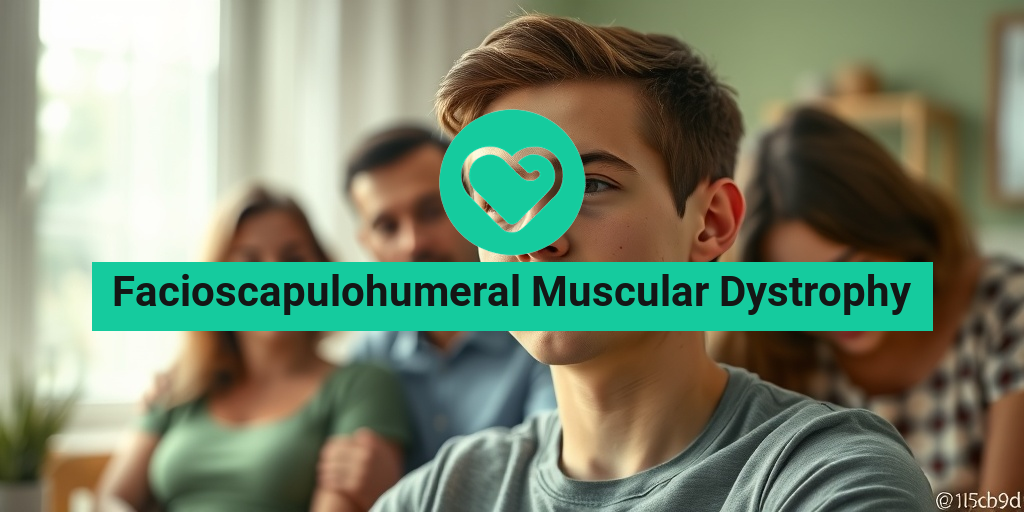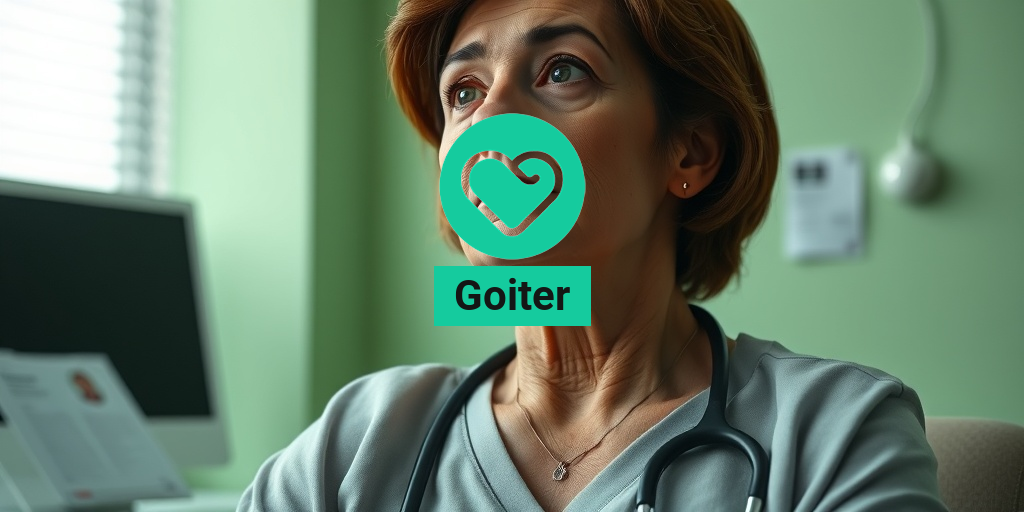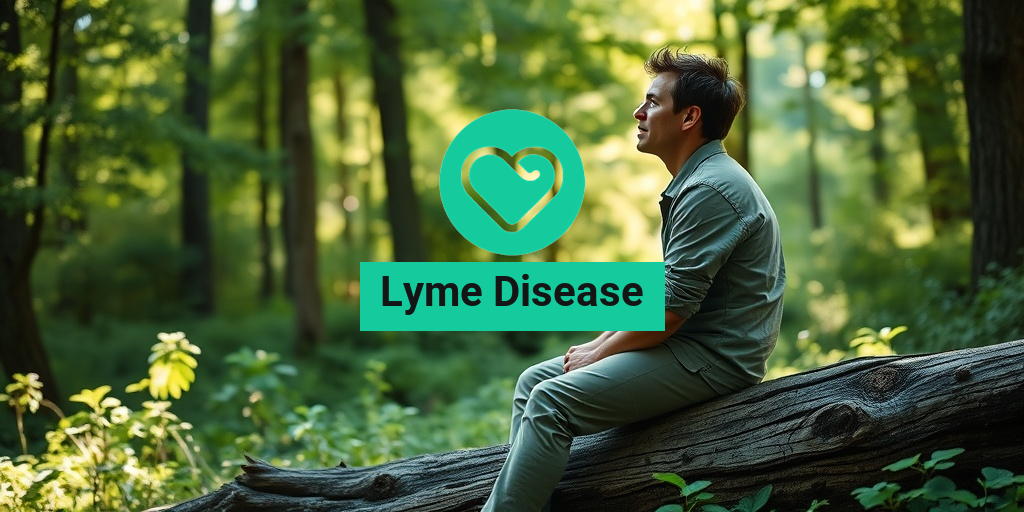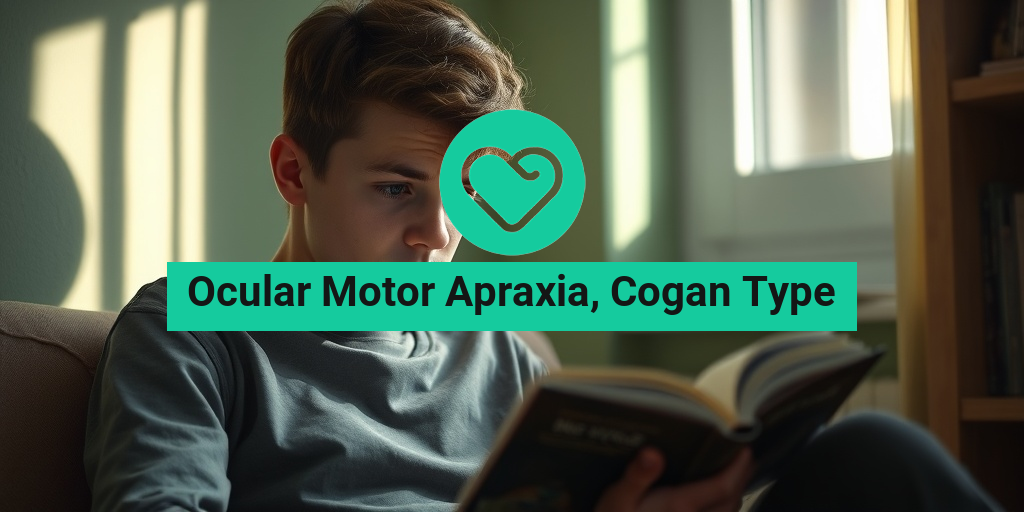What Is Facioscapulohumeral Muscular Dystrophy?
Facioscapulohumeral Muscular Dystrophy (FSHD) is a genetic disorder characterized by progressive muscle weakness and atrophy, primarily affecting the muscles of the face, shoulder blades, and upper arms. This condition is one of the most common forms of muscular dystrophy, impacting both males and females, typically manifesting in late adolescence or early adulthood. Understanding FSHD is crucial for early diagnosis and management, which can significantly improve the quality of life for those affected.
Genetic Basis of FSHD
FSHD is caused by a genetic mutation that affects the DUX4 gene, which plays a vital role in muscle development and maintenance. In most cases, the condition is inherited in an autosomal dominant pattern, meaning that only one copy of the mutated gene from an affected parent can lead to the disorder in their offspring. However, some cases arise sporadically without a family history, making genetic counseling an essential aspect of managing the condition.
Types of FSHD
There are two main types of Facioscapulohumeral Muscular Dystrophy:
- Type 1 (FSHD1): This is the most common form, associated with the deletion of a specific DNA segment on chromosome 4.
- Type 2 (FSHD2): This type is less common and is linked to mutations in the gene that regulates the DUX4 gene expression.
Both types share similar symptoms, but the severity and progression can vary significantly among individuals.
Facioscapulohumeral Muscular Dystrophy Symptoms
The symptoms of Facioscapulohumeral Muscular Dystrophy can vary widely, but they typically begin in the face, shoulders, and upper arms. Recognizing these symptoms early can lead to timely interventions and better management of the condition.
Common Symptoms
Some of the most prevalent symptoms of FSHD include:
- Facial Weakness: Individuals may notice difficulty in closing their eyes, smiling, or frowning due to weakness in the facial muscles.
- Shoulder Blade Wing: The shoulder blades may protrude outward, a condition known as scapular winging, making it difficult to raise the arms.
- Upper Arm Weakness: Weakness in the upper arms can lead to challenges in lifting objects or performing daily tasks.
- Progressive Muscle Weakness: Over time, muscle weakness may spread to other areas, including the lower limbs, although this is less common.
- Fatigue: Many individuals with FSHD report increased fatigue, which can impact their overall quality of life.
Additional Symptoms and Complications
While the primary symptoms focus on muscle weakness, FSHD can also lead to other complications, such as:
- Hearing Loss: Some individuals may experience sensorineural hearing loss.
- Respiratory Issues: In advanced cases, respiratory muscles may weaken, leading to breathing difficulties.
- Cardiac Problems: There is a potential risk of heart complications, necessitating regular cardiac evaluations.
Diagnosis and Management
Diagnosing Facioscapulohumeral Muscular Dystrophy typically involves a combination of clinical evaluation, family history assessment, and genetic testing. Early diagnosis is crucial for effective management, which may include physical therapy, occupational therapy, and, in some cases, surgical interventions to address specific symptoms.
For those seeking more information and support regarding FSHD, Yesil Health AI (yesilhealth.com) offers a wealth of evidence-based health answers and resources that can help individuals navigate their journey with this condition.
In conclusion, understanding Facioscapulohumeral Muscular Dystrophy is essential for those affected and their families. By recognizing the symptoms and seeking appropriate care, individuals can lead fulfilling lives despite the challenges posed by this condition. 🌟
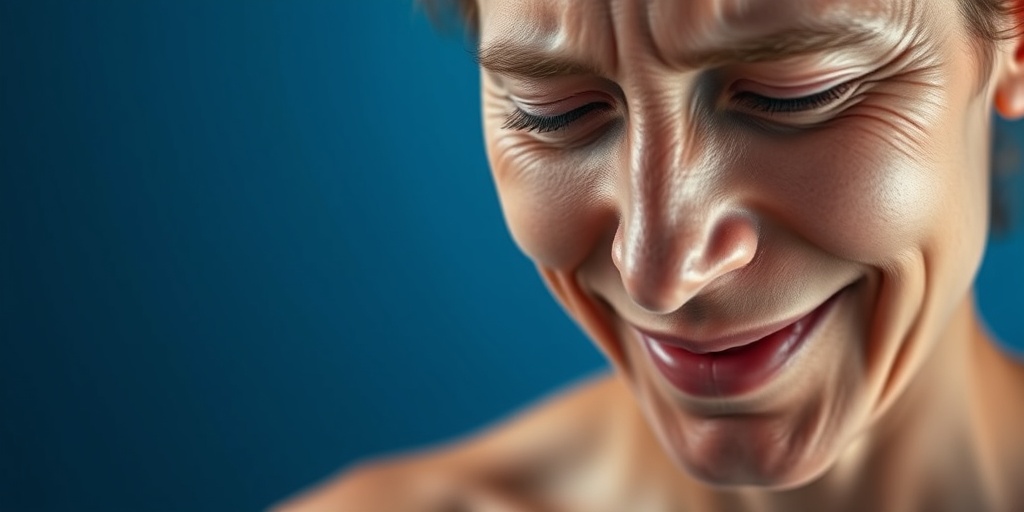
Causes of Facioscapulohumeral Muscular Dystrophy
Facioscapulohumeral Muscular Dystrophy (FSHD) is a genetic disorder that primarily affects the muscles of the face, shoulder blades, and upper arms. Understanding the causes of this condition is crucial for those affected and their families. Let’s delve into the underlying factors that contribute to FSHD.
Genetic Mutations
The primary cause of FSHD is linked to genetic mutations, specifically in the D4Z4 region of chromosome 4. In individuals with FSHD, there is a deletion of a specific number of repeats in this region. Normally, this area contains between 11 to 100 repeats, but in those with FSHD, the number is reduced to fewer than 10. This genetic alteration leads to the inappropriate expression of the DUX4 gene, which is believed to play a significant role in muscle degeneration.
Inheritance Patterns
FSHD follows an autosomal dominant inheritance pattern, meaning that only one copy of the mutated gene from an affected parent can cause the disorder in their offspring. This characteristic makes it possible for the condition to be passed down through generations. However, not everyone who inherits the mutation will develop symptoms, which can make genetic counseling essential for families.
Environmental Factors
While FSHD is primarily genetic, some studies suggest that environmental factors may influence the severity and onset of symptoms. Factors such as physical activity, stress, and overall health may play a role in how the disease manifests. However, more research is needed to fully understand these interactions.
Risk Factors for Facioscapulohumeral Muscular Dystrophy
Identifying the risk factors associated with Facioscapulohumeral Muscular Dystrophy can help in early diagnosis and management of the condition. Here are some key risk factors to consider:
Family History
Having a family history of FSHD is one of the most significant risk factors. If a parent has the condition, there is a 50% chance of passing it on to their children. This familial link underscores the importance of genetic counseling for families affected by FSHD.
Age of Onset
FSHD can manifest at any age, but symptoms typically begin in late adolescence or early adulthood. The age of onset can influence the progression of the disease, with earlier onset often leading to more severe symptoms. Understanding the typical age range for symptom development can aid in early detection and intervention.
Gender
Research indicates that both males and females can be affected by FSHD, but some studies suggest that males may experience more severe symptoms. This difference may be attributed to hormonal factors or other biological differences, although more research is needed to clarify these observations.
Genetic Modifiers
In addition to the primary genetic mutation, other genetic modifiers may influence the severity and progression of FSHD. Variations in other genes may either exacerbate or mitigate the effects of the D4Z4 mutation, leading to a wide range of symptoms among individuals with the same genetic background.
Physical Activity Levels
While not a direct cause, the level of physical activity may impact the progression of FSHD. Regular, moderate exercise can help maintain muscle strength and function, potentially delaying the onset of more severe symptoms. However, excessive strain on the muscles can lead to increased fatigue and damage, so a balanced approach is essential.
In summary, understanding the causes and risk factors associated with Facioscapulohumeral Muscular Dystrophy is vital for effective management and support. By recognizing these elements, individuals and families can better navigate the challenges posed by this condition. 🌟
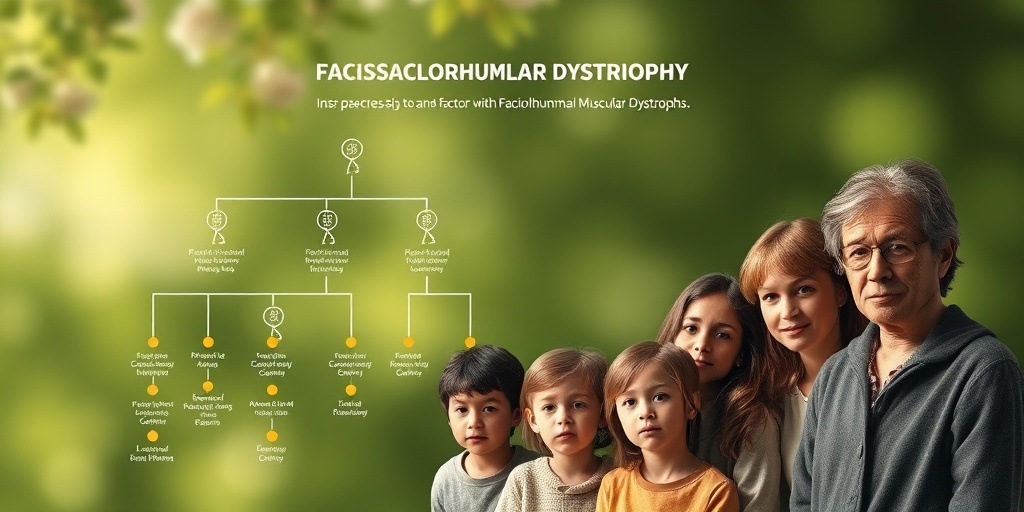
Diagnosis of Facioscapulohumeral Muscular Dystrophy
Diagnosing Facioscapulohumeral Muscular Dystrophy (FSHD) can be a complex process, as it often requires a combination of clinical evaluation, family history assessment, and specific diagnostic tests. This condition primarily affects the muscles of the face, shoulders, and upper arms, leading to progressive weakness. Understanding the diagnostic process is crucial for early intervention and management.
Clinical Evaluation
The first step in diagnosing FSHD typically involves a thorough clinical evaluation by a healthcare professional. During this evaluation, the doctor will:
- Review the patient’s medical history and symptoms.
- Conduct a physical examination to assess muscle strength and function.
- Look for characteristic signs of muscle weakness, particularly in the facial and shoulder muscles.
Common symptoms that may prompt further investigation include:
- Difficulty raising the arms.
- Facial weakness, such as trouble smiling or closing the eyes.
- Shoulder drooping.
Genetic Testing
Once a clinical evaluation suggests FSHD, genetic testing is often recommended. This test looks for specific genetic mutations associated with the condition. The most common type, FSHD type 1, is linked to a deletion of DNA in the D4Z4 region on chromosome 4. Genetic testing can confirm the diagnosis and help differentiate between FSHD types.
Electromyography (EMG) and Muscle Biopsy
In some cases, additional tests such as electromyography (EMG) and muscle biopsy may be performed. EMG measures the electrical activity of muscles and can help identify abnormalities consistent with muscular dystrophy. A muscle biopsy involves taking a small sample of muscle tissue to examine for signs of degeneration or inflammation.
Family History and Inheritance Patterns
Understanding the family history is also vital, as Facioscapulohumeral Muscular Dystrophy is inherited in an autosomal dominant pattern. This means that an affected individual has a 50% chance of passing the condition to their offspring. A detailed family history can provide insights into the likelihood of the condition being present in other family members.
Complications of Facioscapulohumeral Muscular Dystrophy
While Facioscapulohumeral Muscular Dystrophy primarily affects muscle strength, it can lead to various complications that impact overall health and quality of life. Understanding these complications is essential for effective management and support.
Muscle Weakness and Atrophy
The most direct complication of FSHD is progressive muscle weakness and atrophy. As the condition advances, individuals may experience:
- Increased difficulty with daily activities, such as lifting objects or climbing stairs.
- Loss of independence due to muscle weakness.
Postural Changes and Scoliosis
As muscle strength diminishes, individuals with FSHD may develop postural changes, including scoliosis (curvature of the spine). This can lead to:
- Pain and discomfort.
- Breathing difficulties if the curvature affects the rib cage.
Facial Weakness and Communication Challenges
Facial muscle weakness can lead to challenges in communication. Individuals may find it difficult to:
- Articulate words clearly.
- Express emotions through facial expressions.
This can impact social interactions and emotional well-being, making support from family and friends crucial.
Cardiac and Respiratory Complications
In some cases, FSHD can lead to cardiac and respiratory complications. These may include:
- Cardiomyopathy, which affects heart function.
- Respiratory muscle weakness, leading to breathing difficulties.
Regular monitoring and proactive management are essential to address these potential complications.
Psychosocial Impact
The psychosocial impact of living with Facioscapulohumeral Muscular Dystrophy can be significant. Individuals may experience:
- Feelings of isolation or depression due to physical limitations.
- Anxiety about the progression of the disease and its impact on life.
Support groups and counseling can provide valuable resources for coping with these emotional challenges.

Treatment Options for Facioscapulohumeral Muscular Dystrophy
Facioscapulohumeral Muscular Dystrophy (FSHD) is a genetic disorder characterized by progressive muscle weakness, primarily affecting the facial, shoulder, and upper arm muscles. While there is currently no cure for FSHD, various treatment options can help manage symptoms and improve quality of life. Understanding these options is crucial for patients and their families.
Physical Therapy
One of the most effective ways to manage FSHD symptoms is through physical therapy. A tailored exercise program can help maintain muscle strength and flexibility. Physical therapists often focus on:
- Stretching exercises to prevent contractures and maintain range of motion.
- Strength training to enhance muscle function, particularly in unaffected muscle groups.
- Balance and coordination exercises to reduce the risk of falls.
Regular physical therapy sessions can significantly improve mobility and overall well-being for individuals with FSHD. 🏋️♂️
Occupational Therapy
Occupational therapy plays a vital role in helping individuals with FSHD adapt to daily activities. Therapists work with patients to:
- Identify adaptive equipment that can assist with daily tasks.
- Develop strategies to conserve energy and manage fatigue.
- Enhance fine motor skills for tasks such as writing or buttoning shirts.
By focusing on practical solutions, occupational therapy can empower individuals to maintain independence and improve their quality of life. 🛠️
Medications
While there is no specific medication for FSHD, certain drugs can help manage symptoms. These may include:
- Anti-inflammatory medications to reduce muscle inflammation.
- Pain relievers to alleviate discomfort associated with muscle weakness.
- Antidepressants to address mental health challenges that may arise due to chronic illness.
It’s essential for patients to discuss medication options with their healthcare provider to find the most suitable regimen. 💊
Gene Therapy and Clinical Trials
Research into gene therapy for FSHD is ongoing, with several clinical trials exploring potential treatments. These innovative approaches aim to:
- Target the underlying genetic cause of FSHD.
- Enhance muscle function and slow disease progression.
Patients interested in participating in clinical trials should consult with their healthcare team to understand eligibility and potential benefits. 🧬
Living with Facioscapulohumeral Muscular Dystrophy
Living with Facioscapulohumeral Muscular Dystrophy can present unique challenges, but with the right support and strategies, individuals can lead fulfilling lives. Here are some key aspects to consider:
Emotional and Psychological Support
Dealing with a chronic condition like FSHD can take a toll on mental health. It’s important to seek emotional support through:
- Counseling or therapy to address feelings of anxiety or depression.
- Support groups where individuals can share experiences and coping strategies.
- Family support to foster understanding and encouragement.
Connecting with others who understand the journey can be incredibly beneficial. 🤝
Adapting Your Environment
Making adjustments to your living space can significantly enhance comfort and accessibility. Consider:
- Installing grab bars in bathrooms for safety.
- Using mobility aids like walkers or scooters to navigate your home and community.
- Organizing your space to minimize the need for reaching or bending.
These adaptations can help maintain independence and reduce the risk of injury. 🏡
Staying Active and Engaged
Maintaining an active lifestyle is crucial for both physical and mental health. Engage in:
- Social activities that promote interaction and connection.
- Hobbies that you enjoy, whether it’s painting, gardening, or reading.
- Gentle exercises like swimming or yoga to stay fit without overexerting yourself.
Staying engaged in life can foster a positive outlook and improve overall well-being. 🌟
In conclusion, while Facioscapulohumeral Muscular Dystrophy presents challenges, understanding treatment options and implementing supportive strategies can lead to a fulfilling life. With the right resources and support, individuals can navigate their journey with resilience and hope.

Frequently Asked Questions about Facioscapulohumeral Muscular Dystrophy
What is Facioscapulohumeral Muscular Dystrophy?
Facioscapulohumeral Muscular Dystrophy (FSHD) is a genetic disorder characterized by progressive muscle weakness and atrophy, primarily affecting the muscles of the face, shoulder blades, and upper arms. It is one of the most common forms of muscular dystrophy.
What are the symptoms of Facioscapulohumeral Muscular Dystrophy?
The symptoms of Facioscapulohumeral Muscular Dystrophy can vary widely among individuals but typically include:
- Weakness in facial muscles, leading to difficulty in closing the eyes or smiling.
- Shoulder blade winging, where the shoulder blades protrude outwards.
- Weakness in the upper arms, making it hard to lift objects.
- Difficulty with activities such as climbing stairs or lifting heavy items.
How is Facioscapulohumeral Muscular Dystrophy inherited?
Facioscapulohumeral Muscular Dystrophy is typically inherited in an autosomal dominant pattern, meaning that only one copy of the mutated gene from an affected parent can cause the disorder in their offspring. However, some cases may arise sporadically without a family history.
What are the treatment options for Facioscapulohumeral Muscular Dystrophy?
Currently, there is no cure for Facioscapulohumeral Muscular Dystrophy, but treatment focuses on managing symptoms and improving quality of life. Options may include:
- Physical therapy to maintain muscle strength and flexibility.
- Occupational therapy to assist with daily activities.
- Medications to manage pain and other symptoms.
How is Facioscapulohumeral Muscular Dystrophy diagnosed?
Diagnosis of Facioscapulohumeral Muscular Dystrophy typically involves a combination of clinical evaluation, family history assessment, and genetic testing to identify mutations in the DUX4 gene.
What is the ICD-10 code for Facioscapulohumeral Muscular Dystrophy?
The ICD-10 code for Facioscapulohumeral Muscular Dystrophy is G71.3, which is used for medical billing and documentation purposes.
How can I find support for Facioscapulohumeral Muscular Dystrophy?
Support groups and organizations dedicated to Facioscapulohumeral Muscular Dystrophy can provide valuable resources, information, and community support. Connecting with others who share similar experiences can be beneficial for both patients and their families.
Where can I learn more about Facioscapulohumeral Muscular Dystrophy?
For more information on Facioscapulohumeral Muscular Dystrophy, consider visiting reputable health websites, genetic counseling services, or local support groups that specialize in muscular dystrophies.

